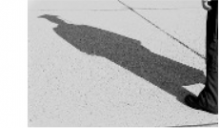 PhD thesis of Khouloud Achouri on 06/22/21
PhD thesis of Khouloud Achouri on 06/22/21


PhD thesis of Khouloud Achouri from TIMC BIOMÉCA team on June the 22th at 9am:
"Development of biomechanical measurement devices
to aid in the design of patient-specific joint orthoses."
Place/Broadcast: (soon)
Thesis supervision:
- Grégory CHAGNON, Professeur des Universités, laboratoire TIMC UMR 5525, Université Grenoble Alpes, Director
- Aurélien COURVOISIER, Maître de Conférence- Praticien Hospitalier, laboratoire TIMC UMR 5525, Université Grenoble Alpes, CHU Grenoble Alpes, Co-director
- Nathanaël CONNESSON, Maître de Conférence, laboratoire TIMC UMR 5525, Université Grenoble Alpes, Co-director
Jury:
- Laurent GORNET, Maître de Conférence HDR, laboratoire GeM UMR 6183, École Centrale de Nantes, Reporter
- Hervé LOUCHE, Professeur des Universités, laboratoire LMGC UMR 5508, Université de Montpellier, Reporter
- Vincent NOUGIER, Professeur des Universités, laboratoire TIMC UMR 5525, Université Grenoble Alpes, Chairman
 Keys words:
Keys words:
Orthosis, Maximum bending moment, Correction forces, Joint, PCA, Patient-specific
 Abstract:
Abstract:The orthosis is a medical device that compensates, supports or protects a part of the body. Nowadays, joint orthoses have been made using an empirical method, using rigid materials that block any joint in a given position, causing discomfort to patients. However, the design of flexible orthosis with adapted properties presents a difficulty: define a flexibility which is suitable for all patients at once. The flexible orthosis must be patient-specific, designed from information about the physical capabilities of each patient. The goal of this thesis work is to provide experimental means of biomechanical measurements that will ultimately allow the design of new patient-specific orthotics. As it’s easier to study a system in 1DOF than a system with multi-degree-of-freedom, we chose to work first on a simple system such as the finger to end with a complex system such as trunk. Therefore, this work is essentially divided into two main parts: biomechanical measurements of the finger and biomechanical measurements of the trunk.
For the finger, we have designed an experimental system capable of measuring the maximum bending moments in the Proximal InterPhalangeal Joint (PIP), as a function of the angular configuration. It has been shown that the maximum bending moment depends simultaneously on subject specification, PIP angle, and gender. On the other hand, the clinical measurements observed contain noises which distort the data. Thanks to the ACP statistical method, we were able to set up a tool which filter the noise of the measurements taken by the designer of the patient-specific orthosis.
Regarding the trunk study, a device was developed to determine the correction forces imposed by a corset on the trunk of a scoliotic subject in relation to the value of the applied correction. He’s able to give an order of magnitude of force. However, the errors generated by the used sensors limit the reliability of the system. In order to improve the system, it’s necessary to use other types of sensors.
The two devices designed for the finger and the trunk provide biomechanical measurements which are necessary for the design of new patient-specific flexible orthotics. These measurements will be used as input data in the digital modeling of the orthosis to determine its mechanical properties and the choice of suitable material.
